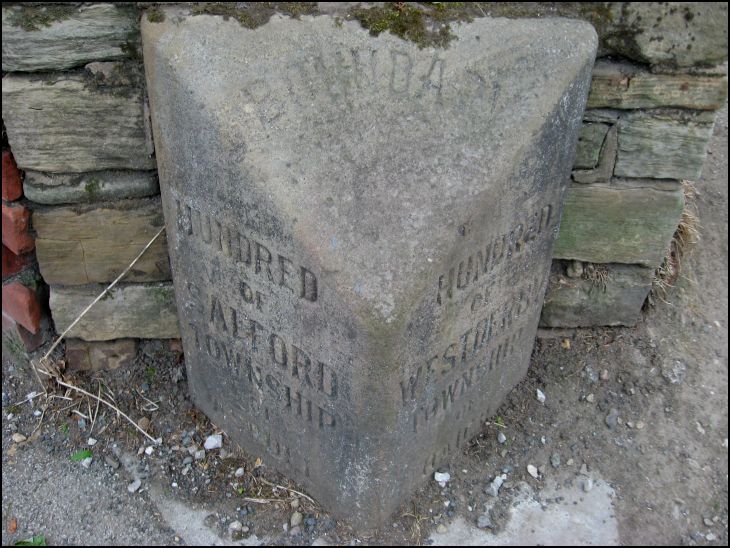Photo-a-Day (Sunday, 22nd June, 2008)
Boundary

Photo: Ian & Allison (Canon Powershot A560)
Columbia Encyclopedia: hundred,
in English history, a subdivision of a shire, first mentioned in the 10th cent. and surviving as a unit of local government into the 19th cent. It is thought that in origin the hundred comprised 100 geld hides, the geld hide being the basic Anglo-Saxon land unit for taxation purposes; but the hundreds varied considerably in size. The number of hundreds in a shire also varied, and their boundaries were continually changed. The hundred had its own court. The Saxon tithing groups, which had corporate responsibility for the crimes committed by their members, came before it, and personal pleas of debt and trespass were also brought there. Originally presided over by the king's reeves, the hundred courts continued to meet regularly every four weeks until the 13th cent., by which time many of them had been taken over by local lords. They gradually lost importance and from the 16th cent. had little more than a formal existence. In Yorkshire, Lincolnshire, Nottinghamshire, Rutland, and Leicestershire the unit equivalent to the hundred was called a wapentake; in Northumberland, Cumberland, Westmorland, and Durham, a ward.
I always wondered what that was about, I have seen it many times,now I know the origin int tinternet beltin.
And in Sussex it's called a Rape.